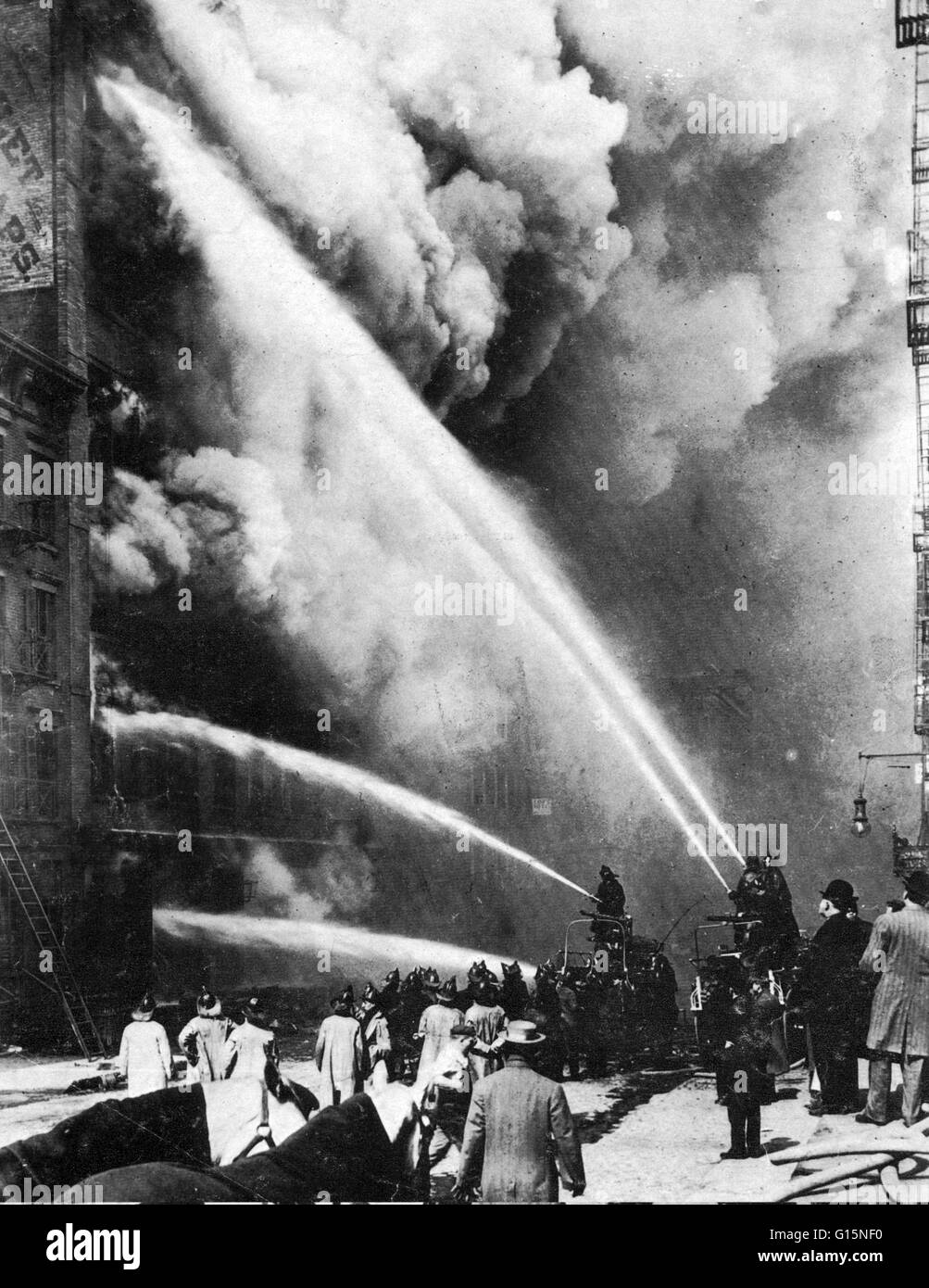The Triangle Shirtwaist Factory fire in New York City on March 25, 1911, was the deadliest industrial disaster in the history of the city of New York. The fire spread through the building's upper three stories. Most workers on the 8th floor and managers o

Image details
Contributor:
Science History Images / Alamy Stock PhotoImage ID:
G15NF0File size:
48 MB (2.2 MB Compressed download)Releases:
Model - no | Property - noDo I need a release?Dimensions:
3600 x 4664 px | 30.5 x 39.5 cm | 12 x 15.5 inches | 300dpiPhotographer:
Photo ResearchersMore information:
This image could have imperfections as it’s either historical or reportage.
The Triangle Shirtwaist Factory fire in New York City on March 25, 1911, was the deadliest industrial disaster in the history of the city of New York. The fire spread through the building's upper three stories. Most workers on the 8th floor and managers on the top floor escaped. Dozens of workers on the 9th floor perished in the blaze. Piles of fabric lay everywhere, and oil from sewing machines dripped on the floor. The fire broke out in a rag bin under a table. Most exits were chain locked, the fire escape collapsed, elevators became impenetrable with heat, and the only accessible exit became blocked by panicked victims. The fire caused the deaths of 146 garment workers who were mostly recent Jewish and Italian immigrant women. The oldest victim was Providenza Panno at 43, and the youngest were 14 year-olds Kate Leone and Rosaria Maltese. Because the managers had locked the doors to the stairwells and exits many of the workers who could not escape the burning building jumped from the eighth, ninth, and tenth floors to the streets below. The fire led to legislation requiring improved factory safety standards and helped spur the growth of the International Ladies' Garment Workers' Union, which fought for better working conditions for sweatshop workers. The factory was located in the Asch Building, at 23-29 Washington Place, now known as the Brown Building, which has been designated a National Historic Landmark and a New York City landmark.